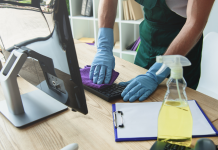Advances in technology have changed the way that healthcare is delivered. The use of technology and telecommunications have provided increased access to medical services, reduced patient travel time to hospitals, and avoided long wait times in emergency rooms.
Today, many people use telemedicine services such as remote monitoring systems. A remote monitoring system is a technology that allows for a patient to be monitored remotely by a health care practitioner who is not physically present with the patient. Patients use devices at home to collect and transmit information about their health status to their health care provider through phone connections, internet access, or mobile apps on a smartphone/tablet.
What is TeleMedicine?
Telemedicine is a relatively new field, but it has quickly become one of the most popular methods of treating patients. In recent years, telemedicine services have significantly developed due to technological changes. Telemedicine services allow doctors to treat patients remotely and provide them with healthcare services via live video conferencing, phone calls, or emails.
Telemedicine is used for various conditions, including chronic illnesses like diabetes and hypertension; acute conditions like chest pain or stroke symptoms; ongoing monitoring for chronic conditions like chronic obstructive pulmonary disease (COPD); pediatric infectious diseases, and mental health needs, including depression and anxiety disorders.
Telehealth solutions have expanded beyond isolated rural communities where patients would otherwise face difficulty traveling long distances to receive treatment from specialists outside their area. It also helps hospitals better manage their workforce by reducing costs associated with travel time for physicians who would otherwise need to go back and forth between campuses or hospital systems to see multiple patients during each shift.
RPM and TeleMedicine
As new technologies emerge, they are constantly changing the way that patients and physicians interact with one another. With remote patient monitoring (RPM), patients can access their medical information anytime and anywhere they need it. This allows them to manage their health independently from home or work without taking time off from their regular activities. RPM also gives doctors more effortless access to this information, making it easier to diagnose any health issues that arise without having to schedule an appointment just for a simple checkup or lab test result.
As more people become aware of RPM’s benefits, we may soon see technology used as a tool not only by those in need but also by those who want preventative care—something especially important when considering today’s growing population of elderly people who require constant monitoring due their age-related conditions such as diabetes or heart disease. But how exactly has RPM advanced the field of telemedicine? Let’s find out.
Virtual Medical Services for Rural Areas
The use of technology and telecommunications to provide virtual medical services has helped many patients. Telemedicine has allowed people to receive medical care from a distance, with doctors able to communicate over the Internet or by phone.
This provides an alternative for those who cannot afford high-priced care and allows them to receive the treatment they need at home or from a nursing facility or hospital bed.
24/7/365 Access to Healthcare
Remote patient monitoring has provided several benefits. It has provided more accessible access to medical care. immediate care, 24/7 access, and care from anywhere in the world. telemedicine allows you to see a specialist, doctor, or nurse whenever you need it.
It has reduced hospital stays costing thousands of dollars per visit and made it easier for patients to navigate their daily lives without worrying about transportation or child care for their hospital visits.
Reduced Patient Influx and Waiting Times
Remote patient monitoring can reduce patient travel time, reduce wait times in emergency rooms, and lessen the burden of patient overflow for hospitals. It also allows faster treatment and more efficient use of resources by allowing doctors to treat patients remotely rather than juggling hundreds of patients in waiting rooms.
In addition, remote patient monitoring improves health outcomes by providing timely access to vital healthcare services that may not be available locally.
Management of Chronic Conditions
RPM is a good option for people who cannot leave home and need daily medical care. People with chronic illnesses can use telemedicine to monitor their medication and health status, receive counseling from their doctor or another healthcare provider, and access specialists without leaving their homes.
Telemedicine allows patients to be monitored worldwide using video conferencing instead of traveling between offices for appointments. This has many advantages, including lower costs and reduced environmental impact compared with traditional office visits, where patients may spend hours driving each way between appointments!
RPM Devices
The patient collects and transmits information about their health status to the provider using devices at home, such as a mobile app on a smartphone or other devices like a tablet. Remote patient monitoring involves collecting and transmitting information about a patient’s condition.
One of the great things RPM has brought on is the lightning-fast development of new devices tailored to telemedicine. Today, remote patient monitoring devices are classified as wearable devices (worn by the user) and non-wearable devices (not worn by the user). Wearable devices include wireless body sensors such as heart rate monitors, electrocardiograms (ECG), respiration monitors, and pulse oximeters, while non-wearable systems may include blood pressure cuffs and thermometers, etc.
SmartClinix offers a remote monitoring system that has proven to be a valuable tool in helping patients with chronic conditions that require frequent monitoring or diagnosis. It is also beneficial for those who may be too sick to travel far distances to receive chemotherapy or dialysis treatments. The healthcare industry has grown significantly due to technological advancements and improvements companies make. With this growth comes more opportunities for patients looking for better ways to receive care from anywhere at any time!








